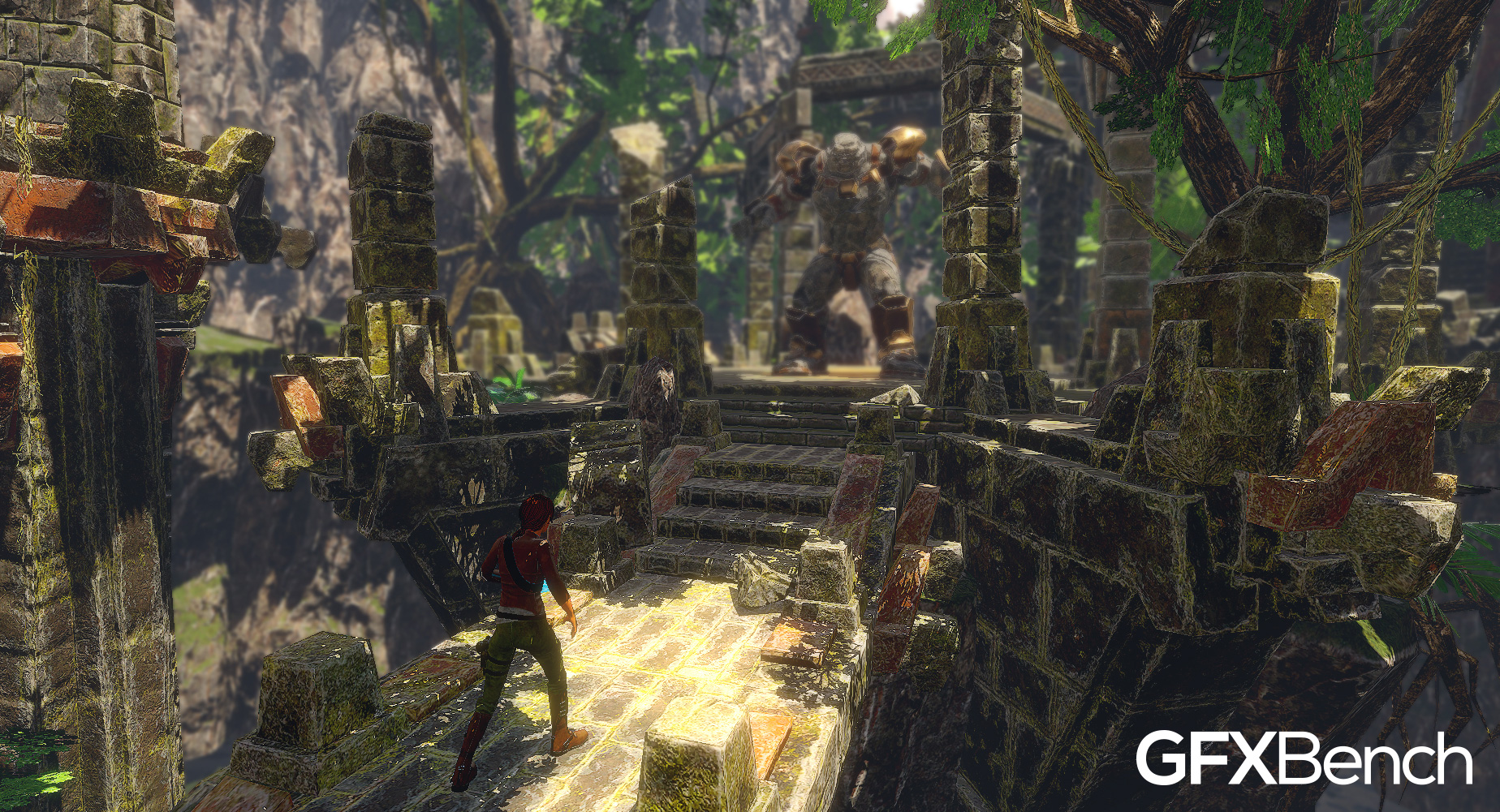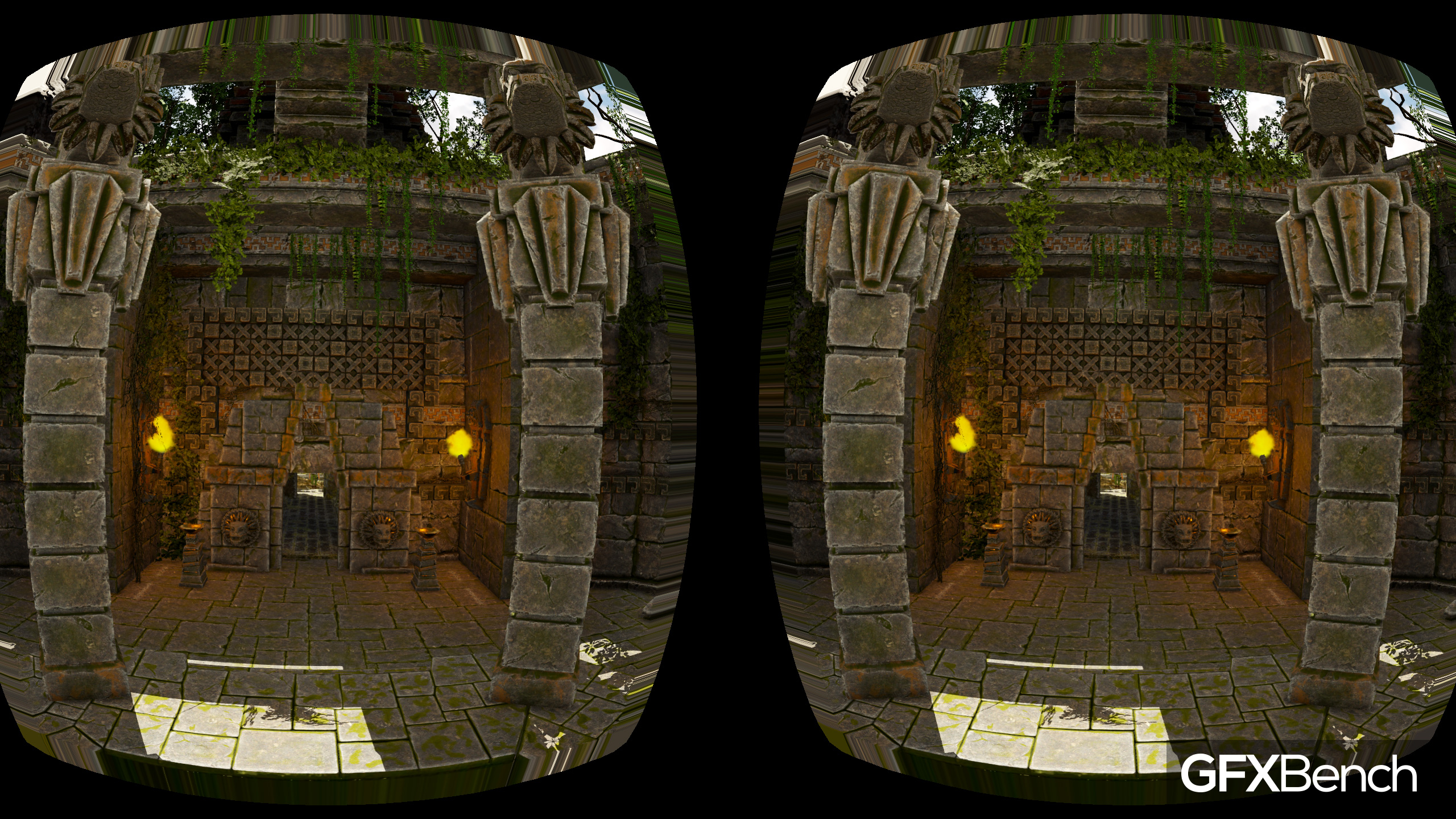GFXBench 5 Aztec Ruins scene debuts at GDC for Vulkan APIMarch 15, 2016 The next version of GFXBench allows to measure performance with using new low-level APIs and introduces VR testing mode. Designed for the new low-level, high-efficiency APIs (Vulkan, Metal and DirectX12) and introducing VR support, GFXBench 5 allows users to measure the performance characteristics of latest devices showcasing demanding game-like content. The benchmark takes advantage of low-level API techniques and features and is written to scale well from mobile to desktop devices. Giving developers direct access to the hardware capabilities, low-level APIs reduce driver overhead, ease CPU load and increase energy efficiency, which is vital on mobile devices. Aztec Ruins is based on an entirely redesigned, in-house rendering engine that utilizes Vulkan’s advantages to achieve higher quality at a lower energy budget. 
One of the most important additions to the rendering engine is Dynamic Global Illumination, which enables showing intricate details in regions of the scene that are only lit by indirect bounced light. “With Vulkan we can take advantage of multiple standardized API features to make dynamic global illumination feasible on mobile devices as well. For example, multi-threaded command buffers and using sub-passes in our deferred renderer help decrease driver overhead, improve bandwidth usage and boost performance”, says Ferenc Pinter, technical lead at Kishonti. Aztec Ruins engine based on Vulkan features Introducing VR testing mode As virtual reality is growing both on mobile and desktop and is expected become a USD 40 billion market by the end of 2020, measuring hardware efficiency with demanding 3D content specifically for VR will become increasingly important. 
To this end, GFXBench 5 will introduce a VR testing mode of the Aztec Ruins scene, which measures FPS, rendering stability (frame drops) and latency data. Additionally, a VR demo mode is also included, where users can discover the scene of Aztec Ruins with their VR headset (this mode does not provide scores). The new benchmark is going to be demonstrated on March 16, 6:20pm at the Vulkan session organized by the Khronos Group. Availability Similar to previous benchmarks, GFXBench 5 is being developed in cooperation with leading technology companies. GFXBench 5 is currently under development and is available for licensing within Kishonti’s Benchmark Development Program. Community version release is planned Q3 2016. About Kishonti Ltd. Kishonti Ltd. is a leading specialist in high-performance graphics and compute solutions. In the past decade we have been working together with leaders of the semiconductor and consumer electronics market listed among top ranking technology companies of the NASDAQ-100. Contacts
|



